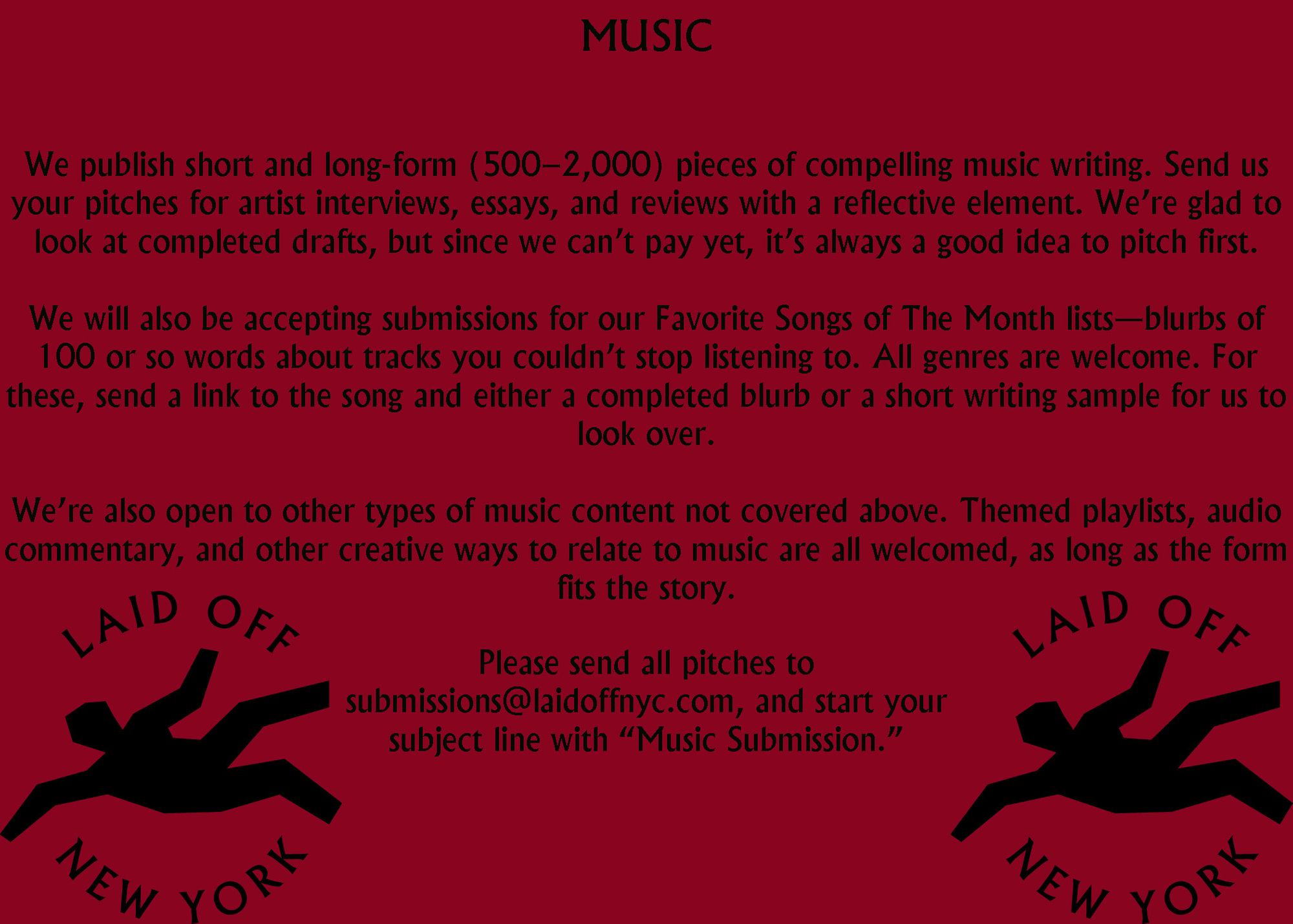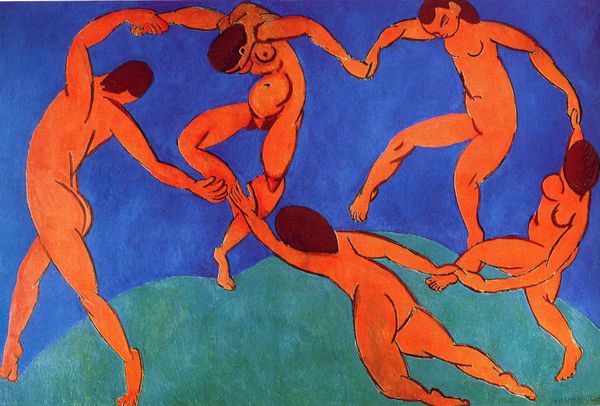by Rapha Grumser
Welcome back to Single of the Month! Here you will find, once a month, two tracks curated, considered, and commentated for your reading and listening pleasure.
With this column, we at the Music section of LaidOffNYC will take inspiration from the 7-inch, 45rpm phonograph record, so that we may write about two tracks we love and would like you to know about.
Traditionally, the A-side and B-side of a Single would be two cuts off the same album. But for the purposes of this column, we will not necessarily limit ourselves to tracks from the same album, or artist, or genre, or even continent. The idea is to use the format to compile two recordings whose juxtaposition creates an interesting interplay. This month’s single features two nuanced takes on spring. Here, we invite you to consider which of the millions of words about this season of “eternal renewal” are worth repeating.
A-Side:
Ah, spring. The season of songs. Of lovers holding hands in parks as robins chirpily build their nests. Of hope reborn, wrapped in a warm blanket of inchoate potential. The time of year when blossoming desire is compared to any number of flowers in any number of collegiate poetry notebooks the world over. If love is the subject of half of all songs ever written, spring is the wellspring of half of all songs ever written about love.
But beware: for fortune’s fools, “April is the cruellest month.” The season of songs is an uncouth reality check for those who find distance between themselves and their ideal.
It is in this longful distance that one finds the words to Fran Landesman’s most famous song, “Spring Can Really Hang You Up The Most,” set to music by Tommy Wolf. Landesman, “poet laureate of lovers and losers,” beatnik fixture of the St. Louis scene, rewrites T.S. Eliot’s “The Waste Land” into the context of the 1950’s jazz standard. “Love seemed sure around the new year,” our singer sighs, “Now it’s April, love is just a ghost.”
As part of the standard repertoire, Landesman’s song has been covered numerous times (including a stunning, definitive version by Ella Fitzgerald). But the rendition most likely to wring drops from my eyes is Blossom Dearie’s 1977 solo version, from Winchester in Apple Blossom Time. It is spare (Dearie once remarked that pianists often play “entirely too much piano for the vocalist”). Dearie’s immaculate self-accompaniment is on full display here—notice how she holds the last word of “Old man winter was a gracious host”, altering the shading underneath her voice by extending a lush chord through the vocal fermata. “All alone, the party’s over,” Dearie sings; I imagine her in a dimly lit recording studio as the breeze outside blows the lilac blossoms from the trees onto the lovers below.
B-Side:
If the A-Side of this Single of The Month strikes you as having been penned by one of Roland Barthes’ sensitive lovers (or an incel, depending on the charitability of your interpretation), the time has now come to sacrifice the virgin.
For this month’s B-Side, I have chosen a bold adaptation of Stravinsky’s The Rite of Spring by The Bad Plus, performed 100 years after its premiere. I am particularly delighted by the way the trio tackled the fourth scene, “Spring Rounds.” Drummer Dave King’s part here reminds me of some of my favorite work done by Elvin Jones with John Coltrane in the 1960s, including a big shivery swell at 11:34 (note the sheer professionalism of King’s stick drop and recovery at 12:00) that settles into the ghastly majesty of one of the more poignant sections in the piece.
Igor Fyodorovich Stravinsky’s The Rite of Spring is perhaps the most canonical work by the most canonical composer of the 20th century. It is an orchestral work for ballet in two parts comprising 13 scenes of pagan Russia, where a young girl is ritualistically condemned by the village elders (think Ari Aster’s Midsommar) to dance to her death. It is reported that the piece–a true watershed moment in music for its inventive use of rhythm, bi-tonality, orchestral color, formal incorporation of folk-song, thematic material, and, well, just about everything else–caused a riot among the audience at its 1913 premiere.
If anything, The Rite is pure Dionysian ecstasy; it finds its joy in the dissonance of fate, the liberating, vertiginous totality of horror. (If there is even so much as a hair-strand of doubt regarding the composer’s supreme impishness, please refer to this delicious youtube loop of the mature Stravinsky smiling demonically and muttering to the camera “I like very much this chord” as he bangs away at the dissonant Eb7/Fb that is the basis of the second scene, “The Augurs of Spring”.) We find not only a boisterous, fanfaronic conception of spring on show in The Rite, but also a tragic re-reading of traditional Russian folk material so radical as to signal musical Modernity, and the edification of an artistic sensibility so potent and fresh that it still sounds new a century later.
Of course, it is impossible for any adaptation of Stravinsky’s music (however inventive) to have the bracing impact of the original. But an homage is always useful as a meditation on the past. “Today we hear the work very differently,” Leonard Bernstein said of The Rite after the composer’s death. “We perceive Stravinsky, the magician, already deep in his alchemy, turning the past into the future.” The Rite is a reminder of our perennial rebirth; winter is dead, the crop grows again. “Igor Stravinsky was born in the spring and died in the spring,” Bernstein continues. “We celebrate Stravinsky as we celebrate spring itself–like an eternal renewal.”


Rapha Grumser co-edits Laid Off NYC's Music section. Get to know him better: @raphagrumser
*Thumbnail image: Dance (II) by Henri Matisse



